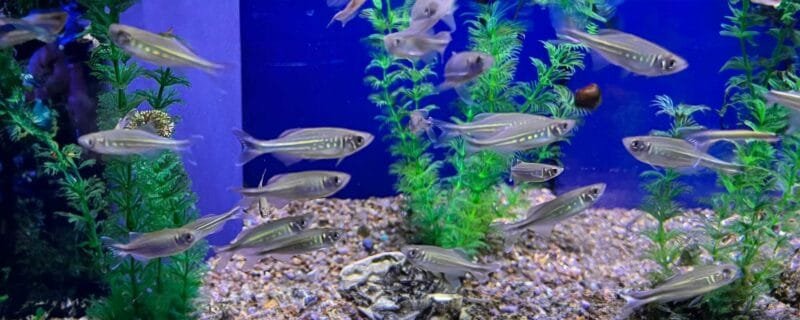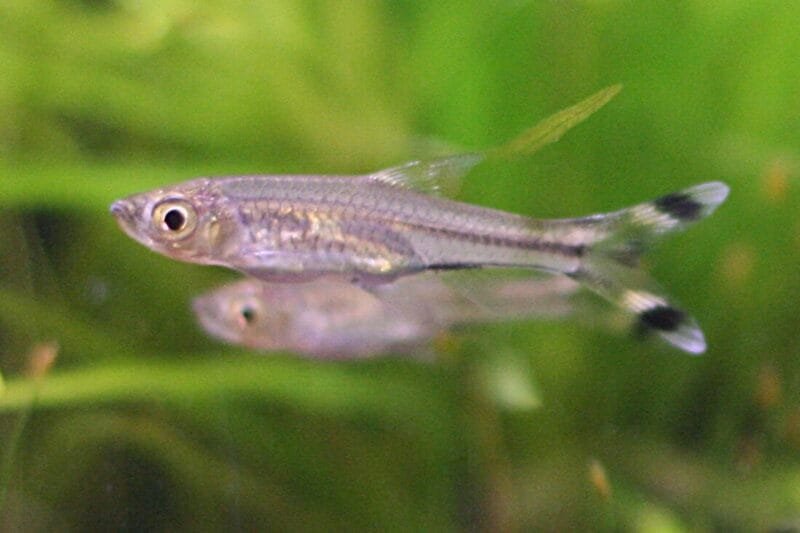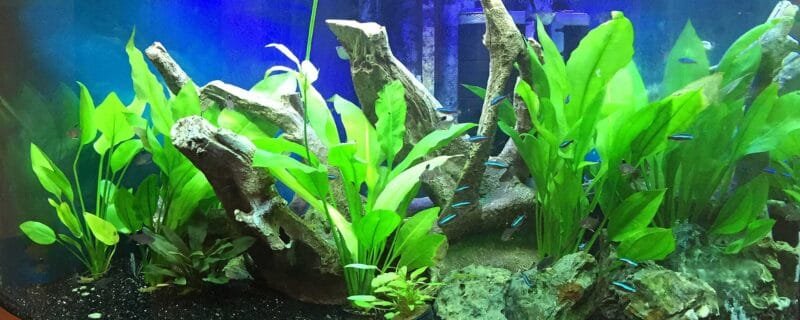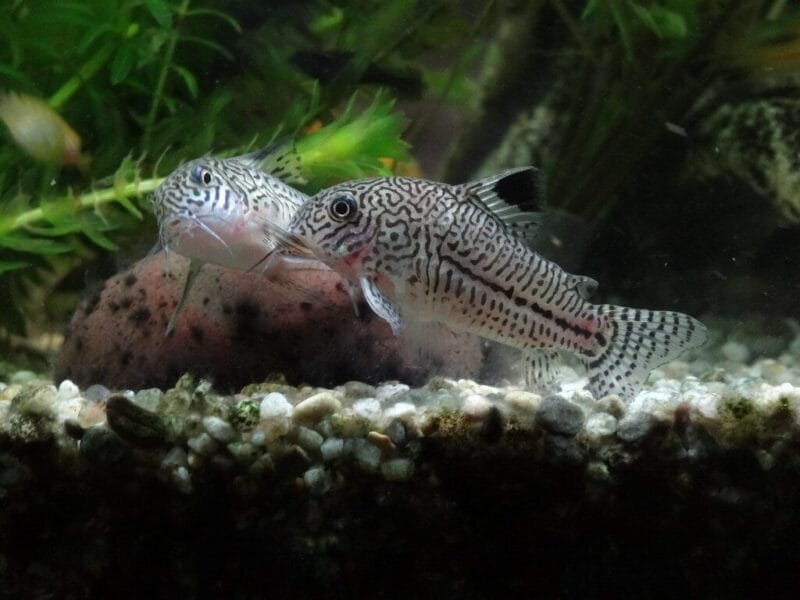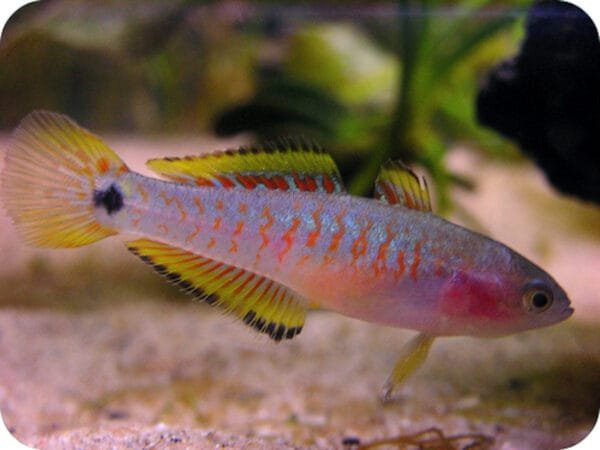The Celestial Pearl Danio (Danio margaritatus), also known in the aquarium trade as the Galaxy Rasbora, is one of the most visually captivating freshwater nano fish available to aquarists. With its shimmering speckled body, rich coloration, and peaceful disposition, it’s a prized addition to small, planted aquariums. Native to Southeast Asia, this tiny fish is admired not just for its beauty, but also for its engaging schooling behavior and ease of care under the right conditions.
Let’s explore the key aspects of this fish—from habitat and breeding to care, tank mates, and species variations.
Common Name and Latin Name
-
Common Name: Celestial Pearl Danio, Galaxy Rasbora
-
Latin Name: Danio margaritatus
This species is part of the Cyprinidae family, which also includes popular aquarium fish like zebrafish (Danio rerio) and barbs. Although it was originally described under a different genus (Celestichthys margaritatus), taxonomists now agree on placing it within the genus Danio.
Native Habitat
Danio margaritatus is native to the highland regions of Myanmar (Burma), specifically around small, vegetated ponds near Hopong, located in the Shan State. These shallow waters are rich in aquatic vegetation and remain cool year-round, making them ideal for small, delicate species.
Due to the initial overcollection of wild specimens when it was first discovered in 2006, efforts have since shifted to captive breeding programs, making this fish more sustainable in the trade.
Size and Lifespan
-
Size: 1.5 to 2.5 cm (about 1 inch)
-
Lifespan: 3–5 years with proper care
Despite their small size, Celestial Pearl Danios can command attention in a nano tank due to their brilliant pattern and movement in a group.
Diet
Danio margaritatus are micropredators in the wild, feeding on small crustaceans, insect larvae, and biofilm.
In captivity, a suitable diet includes:
-
High-quality micro-pellets
-
Crushed flake food
-
Live or frozen foods like baby brine shrimp, daphnia, and microworms
-
Occasional treat of moina or cyclops
Feeding them a varied diet enhances their coloration and supports breeding health.
Sexing Celestial Pearl Danios
Sexing is relatively easy once they mature:
-
Males: More vibrant in color with deeper reds and stronger contrast in their speckled patterns. They often display territorial or courting behavior.
-
Females: Slightly plumper, especially when gravid, with a rounder belly and less intense coloration.
Breeding
Breeding Celestial Pearl Danios is achievable in a home aquarium with the right setup:
Breeding Tips:
-
Use a separate, densely planted breeding tank or moss-covered container
-
Males will display to females by flaring fins and chasing
-
Eggs are scattered among fine-leaved plants like Java moss
-
Parents will eat the eggs, so removing adults post-spawning is essential
-
Eggs hatch within 3–4 days, and fry can be fed infusoria or powdered fry food
Breeding is a rewarding process and supports conservation by reducing wild harvesting.
Water Conditions
To thrive, Celestial Pearl Danios need:
-
Temperature: 22–26°C (72–79°F)
-
pH: 6.5–7.5
-
Hardness: Soft to moderately hard (2–10 dGH)
-
Tank Size: Minimum 10 gallons, ideally more for a group
-
Filtration: Gentle sponge filter recommended
-
Substrate and Decor: Fine substrate with lots of plants, mosses, and hiding spaces
Good water quality and consistent maintenance are crucial to prevent stress and disease in this small-bodied species.
Ease of Care
Moderate. While not difficult to keep, their small size makes them susceptible to fluctuations in water quality, so stable parameters and gentle filtration are essential. They are best kept by aquarists with at least some experience in nano or planted tanks.
Community Compatibility
Celestial Pearl Danios are peaceful and shy. They do best in a species-only tank or with other small, peaceful nano fish. Avoid aggressive or large tank mates.
Compatible tank mates include:
-
Pygmy Corydoras (Corydoras pygmaeus)
-
Chili Rasboras (Boraras brigittae)
-
Ember Tetras (Hyphessobrycon amandae)
-
Shrimp and snails
Always maintain them in groups of at least 6–10 individuals to encourage natural schooling behavior and reduce stress.
Species Variations and Albino Form
While there is no naturally occurring albino version in the trade at present, some selectively bred color morphs have started appearing, including:
-
High red males with enhanced fin coloration
-
Longfin varieties (less common)
-
Some crossbreeding efforts with Danio erythromicron have resulted in hybrid strains, though this is discouraged for conservation reasons
The Albino Celestial Pearl Danio has been rumored but remains extremely rare or possibly unavailable commercially. If introduced, albino specimens would likely exhibit cream-colored bodies with pale pink eyes and reduced speckling.
Related Species
-
Danio erythromicron (Emerald Dwarf Rasbora) – another small, peaceful, and colorful species
-
Danio tinwini – similar in size and schooling behavior
-
Boraras species – excellent tank mates due to similar care needs and size
FAQs about Danio margaritatus
1. How many Celestial Pearl Danios should I keep together?
You should keep them in groups of at least 6, but 10 or more is ideal for natural behavior and visual appeal.
2. Can Celestial Pearl Danios live with shrimp?
Yes! They are excellent tank mates for Neocaridina and Caridina shrimp, especially in heavily planted setups.
3. Do Celestial Pearl Danios need a heater?
If your room temperature stays within 72–79°F (22–26°C), a heater may not be necessary. However, they do best with stable, warm temperatures, so a small adjustable heater is recommended in most setups.
The Celestial Pearl Danio (Danio margaritatus) remains one of the most popular choices for aquarists seeking color, calm, and activity in a small space. With responsible care, these shimmering fish can transform a nano tank into a thriving, vibrant ecosystem.
Let their celestial beauty inspire your aquascape today!

